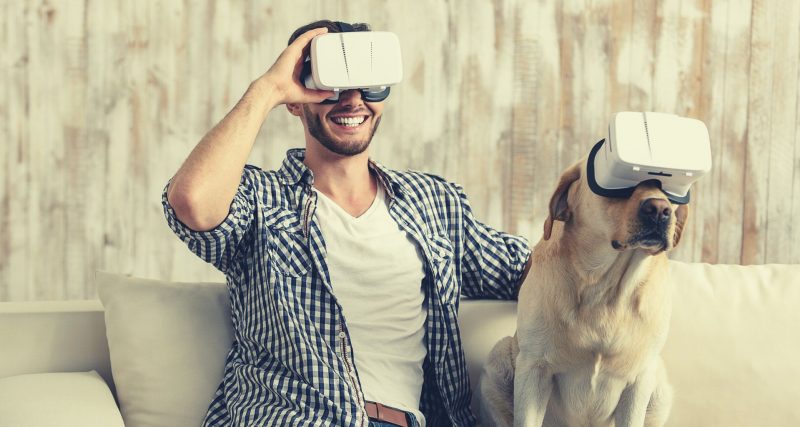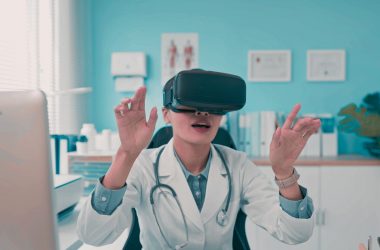Introduction
Imagine slipping on a unique pair of glasses and suddenly finding yourself in a different world or being able to touch and interact with things that exist only in your imagination. That’s the wonder of Virtual Reality (VR). It’s important because it’s changing how we do things and have fun. Let’s delve into the exciting world of VR with some real-life examples.
The Past of VR
VR is more familiar than you might think. Back in the day, pilots used VR-like simulators to practice flying before they ever hopped into a real plane. Astronauts did the same thing to prepare for space missions, making them better at their jobs. Even before that, early VR was used in museums to let people explore 3D environments and historical places.
VR Today
Fast forward to today, and VR has become a game-changer. Take the Oculus Quest, for instance. With this headset, you can put yourself in the middle of an action-packed game like “Beat Saber,” where you use lightsabers to slice through blocks flying at you. It’s not just about having fun; therapists use VR to help people conquer their fears, like heights, by simulating those situations in a safe and controlled environment.
ADVERTISEMENT
Big VR Ideas
Imagine putting on your VR headset and suddenly standing on the edge of a breathtaking virtual cliff. You can hear birds chirping, feel the breeze, and see the world around you thanks to incredible graphics and sound in VR. Soon, you won’t need to worry about tripping over annoying cords because wireless VR is on the horizon. And if you want to mix the virtual world with your real surroundings, augmented reality devices like Microsoft’s HoloLens allow you to interact with holographic objects superimposed on your environment.
VR in Jobs and Fun
VR isn’t just for play; it’s also a powerful tool for professionals. Doctors use VR to practice complex surgeries, reducing the chances of making mistakes during real operations. In schools, companies like Google Expeditions use VR to take students on virtual field trips to places like the Great Wall of China, making learning more engaging. Architects can walk through their architectural designs in VR to spot problems before construction begins, saving time and money. Even soldiers use VR simulations to prepare for their real missions, ensuring they’re ready for any challenges.
Problems and Doing the Right Thing
While VR is fascinating, it’s not without its challenges. Some people experience motion sickness or discomfort in VR, which researchers are working to solve. Privacy is another concern; we must ensure our personal information stays safe while using VR. And, of course, it’s essential to use VR responsibly and not let it take over our lives.
ADVERTISEMENT
What’s Next?
The future of VR is full of possibilities. Imagine using VR to meet up with friends who live far away, feeling like you’re in the same room. Even space exploration is embracing VR; NASA is using it to help astronauts train for their missions and conduct experiments. As VR technology becomes more accessible, more and more people will have the chance to experience its magic.
Boosting SEO with Virtual Reality
Enhanced User Engagement: VR provides a highly immersive and interactive experience. When users engage with VR content on your website design Toronto, they tend to spend more time exploring and interacting with it. Increased user engagement signals to search engines that your content is valuable and relevant, which can positively impact your SEO rankings.
Reduced Bounce Rates
If users find your VR content engaging and informative, they are less likely to bounce back to search results quickly. Lower bounce rates indicate to search engines that your content matches user intent and holds their interest, which can improve your SEO rankings.
ADVERTISEMENT
Quality Backlinks
High-quality VR content can attract backlinks from other websites and blogs, especially if it’s unique and valuable. Backlinks are a crucial factor in SEO, as they indicate to search engines that your website is authoritative and trustworthy.
Increased Social Sharing
Engaging VR experiences are more likely to be shared on social media platforms. When your VR content gets shared, it can lead to increased visibility and traffic to your website, which can indirectly boost your SEO rankings.
Improved Dwell Time
Dwell time refers to the amount of time a user spends on your website before returning to search results. VR content can significantly increase dwell time as users explore and interact with the virtual environment. A longer dwell time can signal to search engines that your content is relevant and valuable.
Mobile Friendliness
Many VR experiences are designed for mobile devices, making your website more mobile-friendly. Google and other search engines consider mobile-friendliness as a ranking factor, so having VR content optimized for mobile can positively impact your SEO.
Rich Media Content
VR content is a form of rich media, which can make your website more visually appealing and engaging. Rich media can lead to a better user experience, reducing bounce rates and increasing the time users spend on your site.
Competitive Advantage
As VR is still relatively new in the online space, adopting it early can give you a competitive advantage. Being an early adopter of emerging technologies can help you stand out in search results and attract more visitors.
Conclusion
VR is transforming the way we learn, play, and work. Let’s continue to push the boundaries of VR technology while using it responsibly. In the near future, we could all be exploring virtual worlds, solving real-world problems, and connecting with others in ways we’ve never imagined, all thanks to the incredible power of VR.








